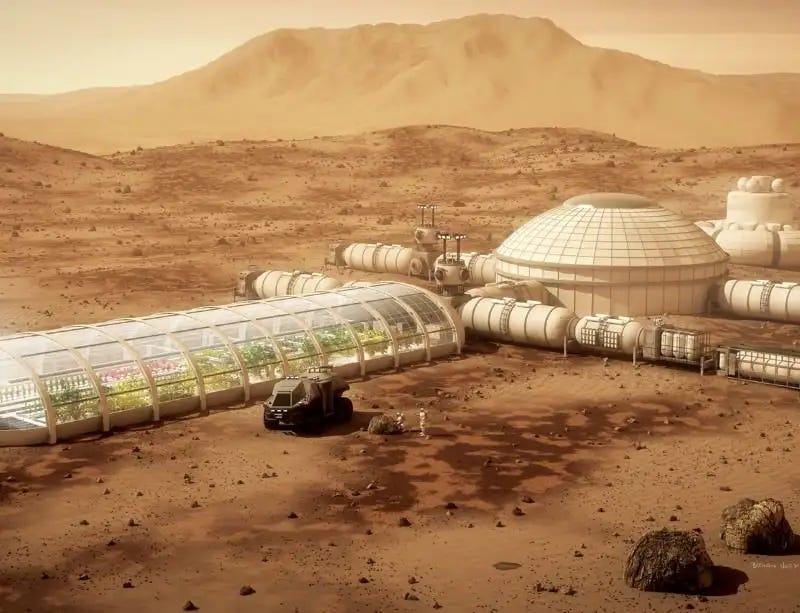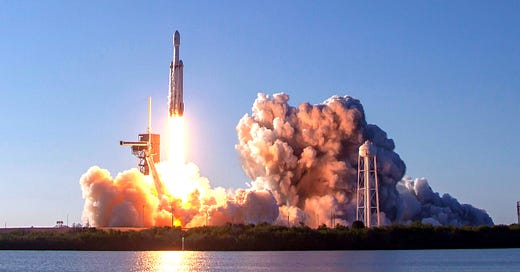The Hidden Space Race
Most Americans don’t know how other countries (and companies) are working on space flight.
For Americans, one of the most unbelievable moments in the Sandra Bullock movie Gravity was not the space debris hitting the space station. It was when we found that the Chinese Space Station might help. The general reaction in the movie was a furrow of the brow and the turning of the head. The thoughts were the same: Does China have a space station?
Yes, it does.
This iteration of the Tiangong is the third such Chinese Space Station. The first space station (Tiangong 1) was launched in 2011 and was in space for 2377 days.
Americans generally have turned their interest away from space, much as our government has done the same. Despite a few reassuring noises from Candidates once every 4 years, nothing has happened in this area. At least nothing new by Americans, and so we ignored it.
Has anything happened in space exploration?
Despite our inattention, many governments have continued exploring the solar system's moon, comets, planets, and other items. Programs show real promise and surprises when looking at countries outside Russia and the United States.
China
China is an avid space explorer. Their programs began with know-how from Russia and their programs in the 1950s and 60s. The success was first deemed critical as a defense against Russia and the United States. Later, China looked to human-crewed space flight as early as 1971.
China first focused on unmanned space travel and was the fifth country to put a satellite in orbit. They have successfully launched many more satellites in the years, each becoming more and more robust and specialized.
China’s first manned space vehicle was launched in 2003. China followed this with more manned programs. China launched two space stations designed as short-term test programs, the Tiagong 1 and Tiagong 2. The manned Chinese Space Station, Tiangong Space Station (3), was launched and staffed in 2022. China operates the Tiangong independently from the International Space Station.
China has also produced robust satellite systems and has placed commercial satellites in orbit for other countries. After a rapid delivery schedule, China completed the Beidow-3 navigation system, which uses satellites to provide navigation, communications, targeting, and more.
China has a lunar program that enabled it to be the third country to land on the moon. China was the first country to land on the moon's far side. Countries had not previously done that because the far side of the moon is inaccessible to communications. This is due to the Moon always displaying the same hemisphere towards the Earth. China solved this problem with a communications satellite orbiting the Moon, which provides a relay to the landing site.
China landed a probe and lander on Mars in 2020. China is a leader in space exploration now, rivaling the United States' programs and probably surpassing Russia’s program.
Japan
Japan launched its first satellite successfully in 1970. Japan has been focused on satellites and unmanned exploration in its programs. Cooperation with the United States was expanded in the 1990s and onwards. Some US know-how was used in Japanese updated rocket technology originally, but Japan has extensive internal experts pushing their program further.
The first Japanese astronaut was expected to be on a US space shuttle mission that was scraped. Instead, the astronaut was included on a Russian mission to their Soyuz 11 in 1990. That same astronaut did fly on the Space Shuttle in 1992. Japan is a member of the International Space Station (ISS) consortium, with Japanese unmanned rockets delivering supplies.
Japan has sent a successful mission to Venus. Its most recent and (to me) impressive launch was a project that landed on an asteroid (25143 Itokawa) and returned to Earth with soil/rock samples. (Note: As of Sept 24th, the United States was able to do the same thing from an asteroid.)
European Space Agency (ESA)
After the Russian launch of Sputnik in 1961, the European Space Agency grew out of a joint French/Italian partnership to counter the Russian advances. It was founded with 10 European countries in 1975, after cooperation agreements previously. The agency has launched numerous satellites to study Earth and other bodies in space.
The ESA operates an entire launch facility in French Guiana for launches. The ESA takes part in the ISS operations, using American or Russian rockets to transport their astronauts. The agency has successfully launched a Venus explorer and plans on a Mars explorer.
India
India’s success in space was first brought to most Americans via the news that they had successfully landed a probe on the South Pole of the Moon. In reality, India’s space program is much larger than that. In 1980, India launched a satellite with its rocket technology. Since then, it has been bustling.
India has the world’s largest group of remote-sensing satellites and operates navigation systems used to support India’s disaster management, telemedicine and navigation operations.
In addition to the landing on the Moon, India has launched two additional Moon exploration vehicles, one Mars mission, and a sun probe.
Israel
Israel has a long history in space exploration focused on satellites and scientific studies. Their contributions, particularly in zero-gravity embryonic development, are impressive. Their first astronaut was killed in the Space Shuttle accident in 1997. Israel has sent astronauts since then to the ISS.
International Space Station
The ISS was made possible by the cooperation of the United States and the Soviet Union in the mid-1980s. The first modules were launched in 1998, and the Space Station was manned starting in 2000. The project has been manned ever since then, the most extended operation of any space station.
The ISS is supported and supplied by Russia, the United States, Japan, ESA, and Canada. It has hosted astronauts from the United States, Russia, Japan, Canada, Italy, France, Germany, United Arab Emirates, Saudi Arabia, Belgium, Brazil, Denmark, Israel, Kazakhstan, Malaysia, the Netherlands, South Africa, South Korea, Spain, Sweden and, the UK.
The ISS is focused on scientific discoveries, effects on humans in zero gravity, and zero gravity impacts on plants, manufacturing, and self-sufficiency. All of this provides vital information as humans get ready to explore Mars.
Commercial Companies
Private and commercial interests have long been focused on the launching of satellites. The United States, Russia, China, India, Iran, Israel, North Korea, South Korea, and the ESA have launched commercial satellites.
Recently, private corporations have developed the capability to supply the ISS and launched their rockets. These programs have been supported by the United States primarily. They are seen as an alternative to the Russian monopoly of ISS launches after the retirement of the US Space Shuttle program.
These cargo transport companies are Space X and Northrop Grumman. Space X also can bring return cargo back to Earth.
Space X is the only private company that can transport astronauts to the ISS, although Boeing should be able to do the same within a year.
11 other private companies make launch vehicles for satellite launches. Furthermore, 3 companies operate manufacturing facilities in space utilizing zero gravity capabilities.
Future
Both further scientific investigations and the commercialization of space will no doubt continue. Many of our current world issues, including climate change, urbanization effects, and navigation, are best investigated from satellites.
Landing on and colonizing Mars is a goal of many nations, as well as the private company, Space X.
In the military sector, countries will continue working on rockets that are more stable, powerful, and cheaper.

Terraforming and Faster Than Light travel are still the domain of science fiction for now.




